Everything You Need to Know About Strategic Procurement


Is your procurement function merely keeping the lights on, or is it a strategic powerhouse driving your organization’s growth?
In today’s business landscape, procurement teams are under increasing pressure to do more than just cut costs.
They need to be agile, innovative, and deeply aligned with the organization’s goals.
If you’re a procurement leader looking to elevate your team’s impact, strategic procurement is the answer.
But what exactly does it entail? How does it differ from operational procurement? And what are the key activities that will unlock its full potential?
In this article, we’ll answer these questions and more.
So, get ready to discover how strategic procurement can revolutionize your approach.
First off, let’s clear up exactly what we mean when we talk about “strategic procurement.”
While it might seem like a straightforward concept, even seasoned procurement professionals often have varying interpretations.
For instance, a poll conducted by CPO Dustine du Preez asked procurement professionals in his network to choose what this concept meant to them, with the following results.
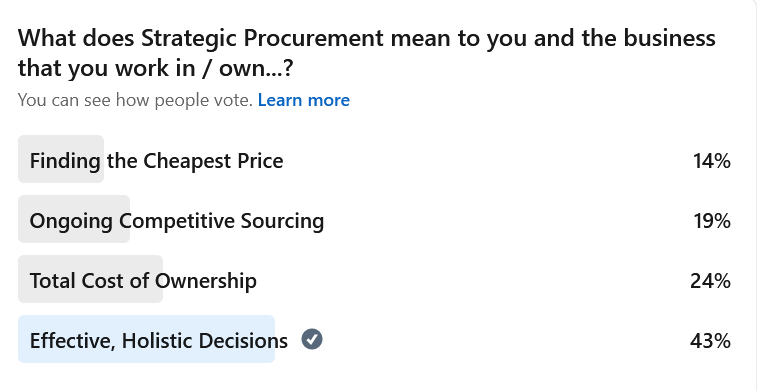
Source: LinkedIn
This poll highlights the fact that strategic procurement can still mean different things to different organizations.
For our purposes, we’ll define strategic procurement as a holistic, proactive, and long-term approach to sourcing and managing goods and services.
It’s a strategic business function that goes beyond simply buying what you need at the lowest price.
Instead, it aligns procurement activities with your organization’s broader goals and objectives.
As Rafael Vela, managing director at Pathway Consulting, notes in his LinkedIn article, the primary aim of strategic procurement is to add value and drive innovation.
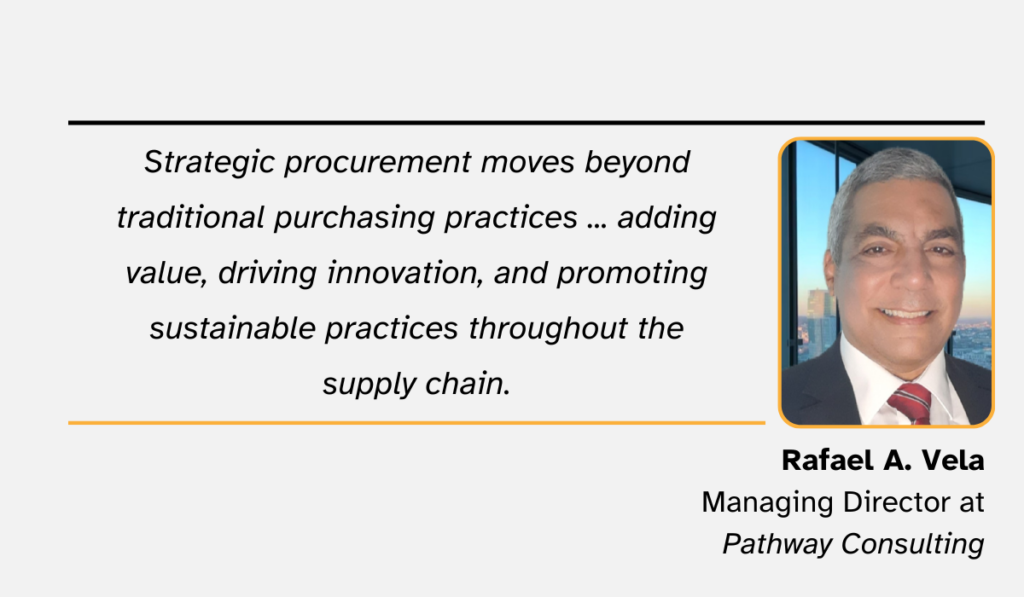
Illustration: Veridion / Data: LinkedIn
This practice moves beyond traditional purchasing processes and the day-to-day operations of procurement, aiming to create a competitive advantage for an organization.
We’ll delve deeper into the distinction between strategic and operational procurement in the next section.
For now, let’s visualize where strategic procurement fits into the overall procurement process.
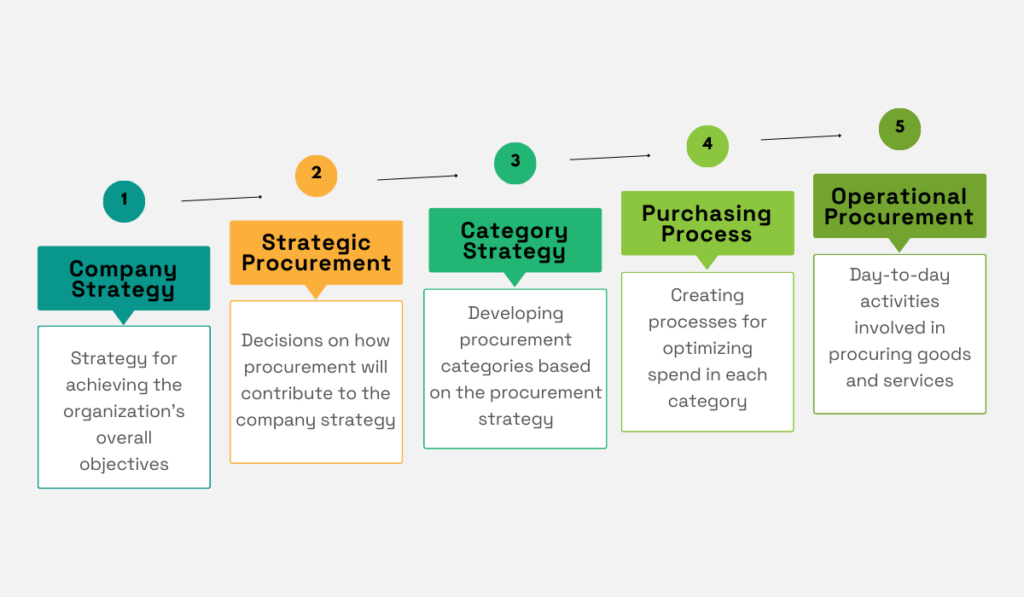
Source: Veridion
As you can see, strategic procurement is closely linked to your company’s overall strategy.
It seeks to achieve organizational goals through optimized procurement practices, thus becoming a key contributor to the overall success of the business.
Strategic procurement also influences category strategy, which involves analyzing specific spending categories to identify opportunities for improvement.
However, it’s important to see that strategic procurement is a higher-level, more conceptual phase than the tactical execution of operational procurement and purchasing activities, represented as the fifth stage in the illustration above.
In essence, strategic procurement is the brains behind the brawn of your procurement function, setting the direction and guiding your decisions toward long-term value creation.
But why does this process matter?
You might think that strategic procurement is just another buzzword, adding unnecessary complexity to what should be straightforward purchasing activities.
However, this thought process overlooks the significant advantages that strategic procurement brings to an organization.
Strategic procurement goes beyond thinking about transactions.
Instead, it aims to leverage procurement activities as a strategic asset to drive value.
This type of procurement has a multitude of benefits, all related to its core aims shown below.
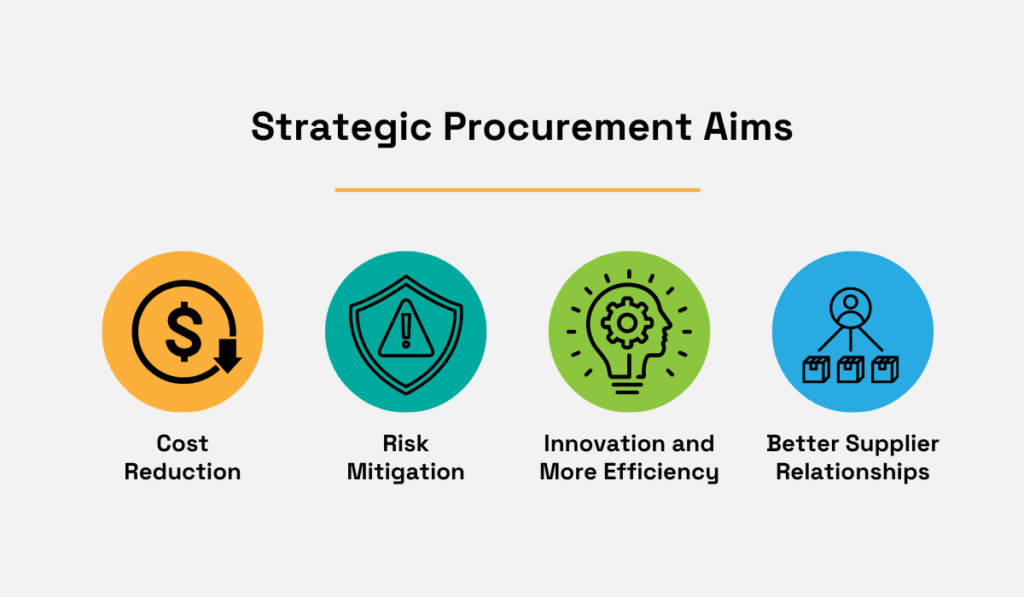
Source: Veridion
Naturally, cost reduction will always be a primary objective.
But strategic procurement approaches this goal holistically, with things like examining the total cost of ownership, optimizing supplier relationships, and identifying opportunities for innovation to achieve sustainable savings.
But equally important is risk mitigation.
Strategic procurement proactively identifies and addresses potential threats, such as supplier disruptions, market volatility, or regulatory changes.
This ensures your supply chain remains resilient and minimizes the potential for costly disruptions.
Another key aspect of risk management is mitigating supplier risks.
Consider the challenges many procurement professionals are facing: key suppliers disappearing, suppliers failing to meet requirements, and general supply shortages.
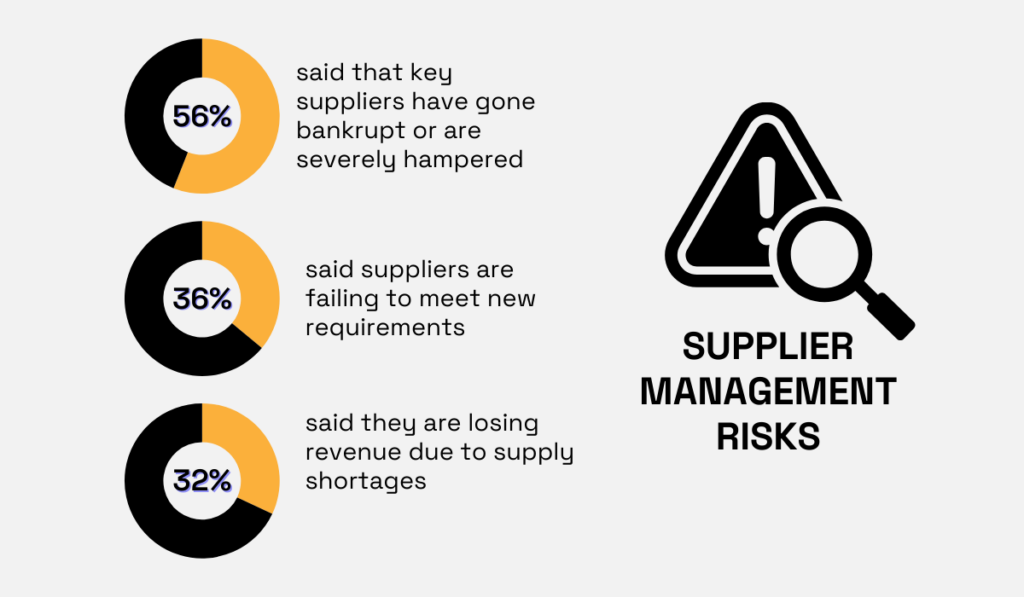
Illustration: Veridion / Data: Deloitte
In this environment, strategic decision-making and cultivating strong supplier relationships become critical.
These relationships can provide a buffer during turbulent times, ensuring that a company has reliable sources of supply even when the market is unpredictable.
Beyond mitigating risks, strategic procurement also seeks to unlock opportunities for growth.
This could involve fostering innovation through strategic partnerships or prioritizing sustainability practices that align with your organization’s values and reduce environmental impact.
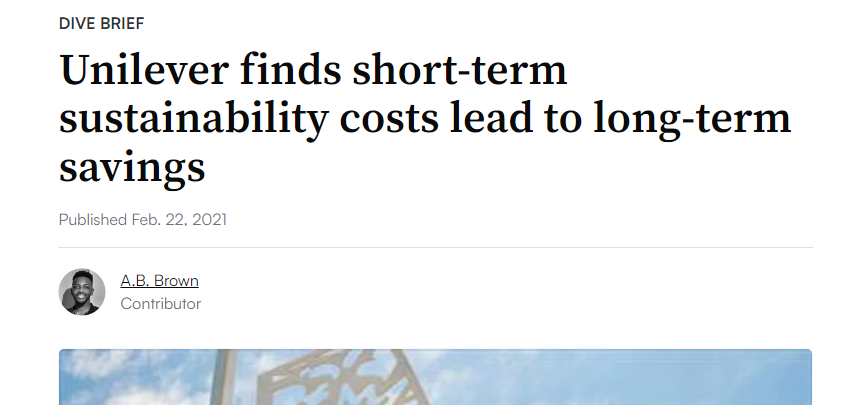
Source: Supply Chain Dive
While these aims may initially seem less tangible to other departments, they can have a significant long-term impact.
Innovation can lead to new product development, enhanced efficiency, and a stronger competitive edge.
On the other hand, sustainability practices can build brand reputation, attract environmentally conscious customers, and even contribute to cost savings through resource optimization.
Simply put, strategic procurement is essential because it goes beyond simple purchasing to address cost reduction, risk mitigation, and growth opportunities.
While discussing strategic procurement, it’s crucial to differentiate its aims and scope from those of operational procurement.
Operational procurement is the day-to-day execution of purchasing activities.
It involves tasks like creating purchase orders, processing invoices, ensuring timely delivery, and resolving any supplier issues.
It’s about keeping the wheels turning and making sure your organization has the goods and services it needs.
Some might mistakenly assume that procurement strategy is solely concerned with these transactional activities.
However, that’s a misconception.
Strategic procurement and operational procurement are two distinct, yet interconnected, concepts.
Let’s take a look at some of their differing aspects summarized in the table below.
| ASPECT | STRATEGIC PROCUREMENT | OPERATIONAL PROCUREMENT |
|---|---|---|
| Focus | Long-term value creation for an organization | Day-to-day purchasing activities and meeting immediate needs |
| Approach | Proactive, data-driven, and aligned with overall business strategy. Emphasizes building strategic partnerships with suppliers. | Reactive, transactional, and focused on fulfilling specific purchase orders and requests. |
| Goals | Optimize total cost of ownership (TCO), reduce supply chain risk, foster innovation, and strengthen competitive advantage. | Achieve cost savings, ensure timely delivery, and maintain adequate inventory levels. |
| Activities | Market analysis, supplier relationship management, category management, contract negotiation, and strategic sourcing. | Purchase order creation, invoice processing, supplier evaluation, and order fulfillment. |
As you can see from the table, the focus, approach, goals, and activities of strategic and operational procurement are fundamentally different.
Strategic procurement focuses on long-term value creation, risk management, and innovation, while operational procurement focuses on day-to-day tasks and immediate needs.
Another helpful way to visualize this is to think of strategic procurement as an “upstream” process and operational procurement as a “downstream” process.
Let’s illustrate what we mean with the following image, which outlines the types of activities involved in both types of procurement.
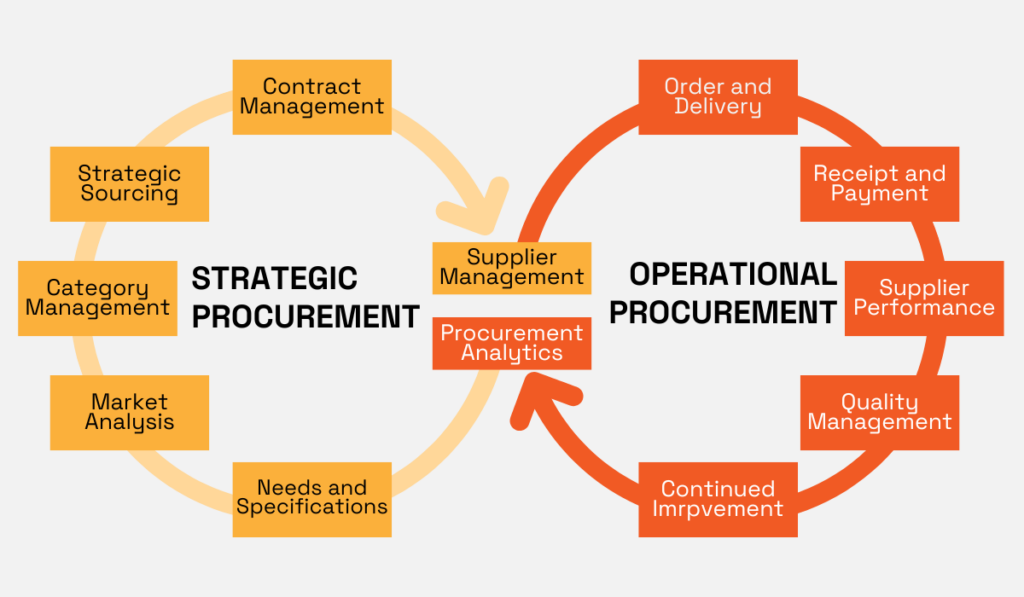
Source: Veridion
Strategic procurement encompasses the upstream activities, which include analyzing organizational needs, assessing market trends, developing a procurement strategy, selecting suppliers, and negotiating contracts.
These activities set the stage for operational procurement, which encompasses the downstream activities that occur after a contract is awarded to a supplier.
This includes things like ordering goods, receiving and inspecting deliveries, processing invoices, and managing supplier and procurement performance.
While these two processes are distinct, they aren’t isolated from each other. As the image shows, they directly influence each other.
For example, the supplier relationships fostered during the strategic procurement phase can have a direct impact on the operational procurement process, affecting things like delivery times, quality, and pricing.
The lines between these activities can also get blurred in areas like supplier management and procurement analytics.
These can be considered shared activities, as both strategic and operational teams need insights into these two aspects to make informed decisions.
If we were to summarize, strategic procurement provides the overarching direction and goals, while operational procurement handles the execution.
Both are essential for a well-functioning procurement function.
Now, let’s turn our attention to the technologies revolutionizing strategic procurement.
In the past (and often even today), procurement teams have relied heavily on spreadsheets and fragmented databases to manage their strategic initiatives.
Communicating and collaborating through these disparate systems is often cumbersome and inefficient, which can hinder progress.
But as the demands on procurement professionals have grown, so too has the need for specialized technology to streamline upstream procurement processes.
These tools provide enhanced visibility and invaluable market intelligence, and even automate some procurement processes, empowering procurement to become truly proactive and agile.
After all, strategic procurement is a complex endeavor with numerous moving parts.
To navigate this complexity effectively, various technologies can be deployed to optimize different aspects of the process.
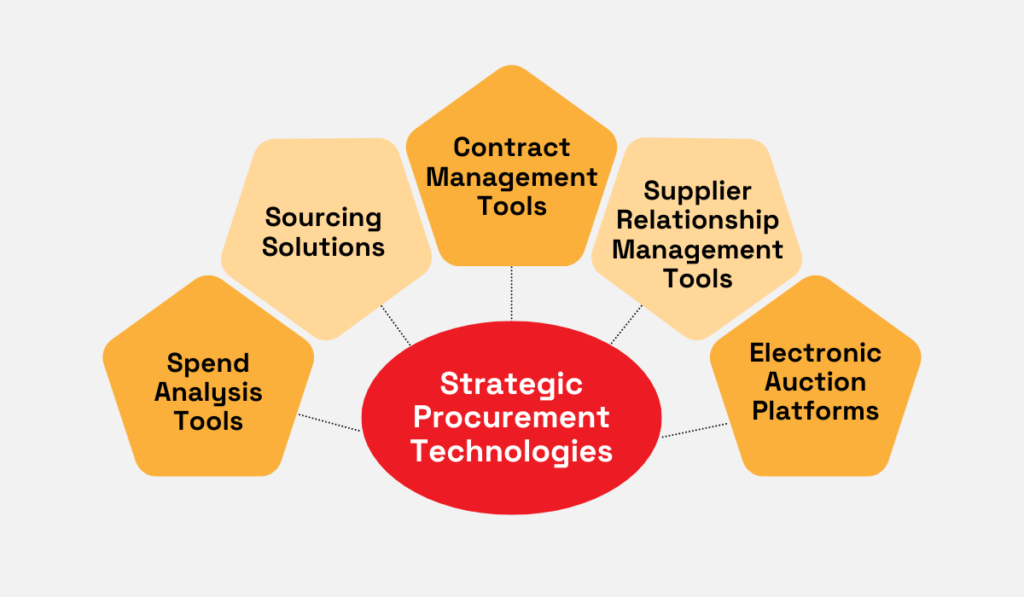
Source: Veridion
Let’s touch on a few of these technologies to get a sense of their impact.
For instance, consider tools like Coupa and SAP Ariba that can be invaluable for spend analysis.

Source: Coupa
These powerful platforms allow you to analyze your organization’s spending patterns, compare your performance against industry benchmarks, track the progress of your KPIs, and ultimately extract more value from your procurement budget.
Or, take supplier relationship management (SRM) tools.
Supplier relationships are a cornerstone of strategic procurement, and SRM tools are designed to help you foster and nurture those partnerships.
They provide a centralized hub for managing supplier information, performance data, and communication, thereby helping you build stronger, more collaborative relationships.
Another technological asset are e-auction platforms like Medius, PRM360, and ProcurePort.
These platforms streamline the sourcing process by enabling you to conduct online auctions with multiple suppliers, driving competitive bidding and achieving cost savings.
Finally, for both supplier sourcing with accurate data and risk management, there are specialized supplier sourcing tools like Veridion.
Our tool boasts a weekly updated global database containing the latest supplier information, easily accessible through our search API.
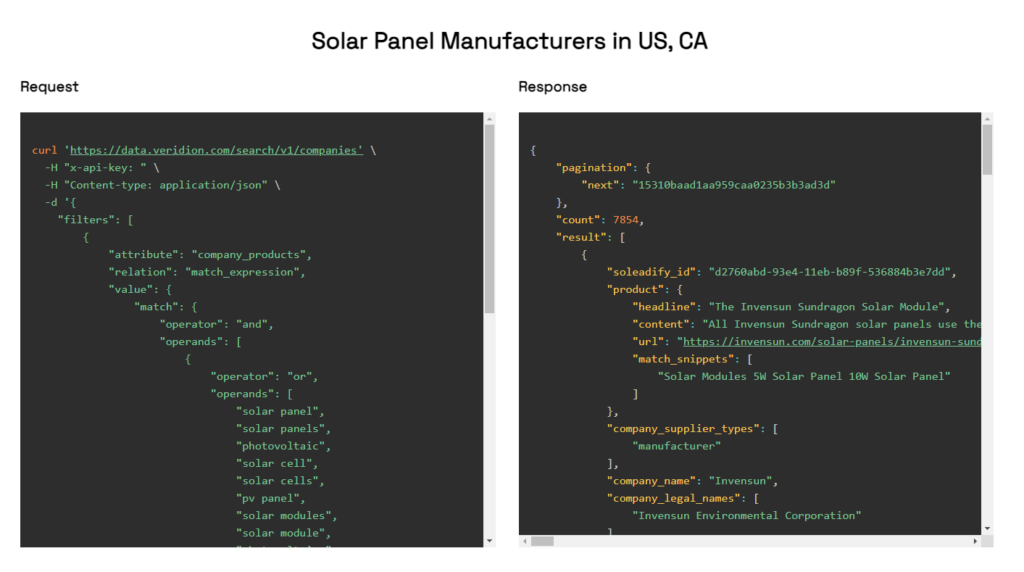
Source: Veridion
This empowers you to quickly identify reliable suppliers that meet your specific criteria, creating the potential for long-term strategic partnerships.
But Veridion goes beyond just data.
Its real-time market insights and change alerts help you anticipate potential risks like material shortages or sudden changes in supplier status, allowing you to proactively seek alternatives and avoid costly disruptions.
By leveraging the right technologies, procurement teams can streamline their processes, gain valuable insights, and elevate their strategic capabilities.
Finally, let’s turn our attention to the various activities that make up the strategic procurement process.
As we’ve discussed, these activities are all geared towards achieving long-term, value-adding benefits for your procurement function and the organization as a whole.
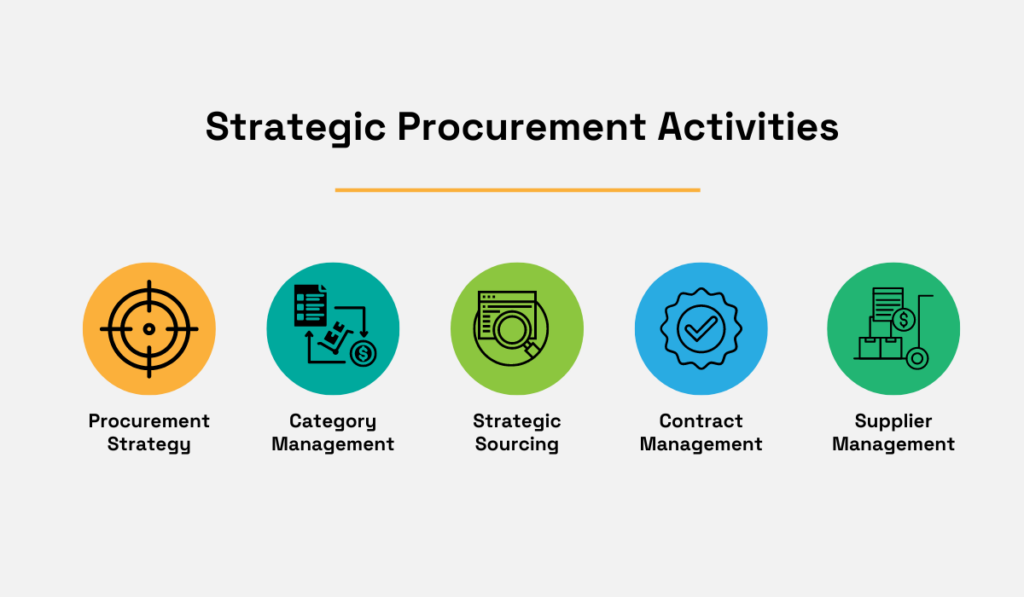
Source: Veridion
While each of these activities deserves a deeper dive, let’s briefly cover a few highlights to give you a clearer picture.
First and foremost is the creation of a comprehensive and data-driven procurement strategy.
This is a foundational element of strategic procurement, serving as a roadmap that aligns procurement goals with broader organizational objectives.
A well-crafted procurement strategy ensures that your team’s efforts are focused on the areas that will have the greatest impact on your bottom line and competitive advantage.
Creating a procurement strategy includes some of the activities shown below.
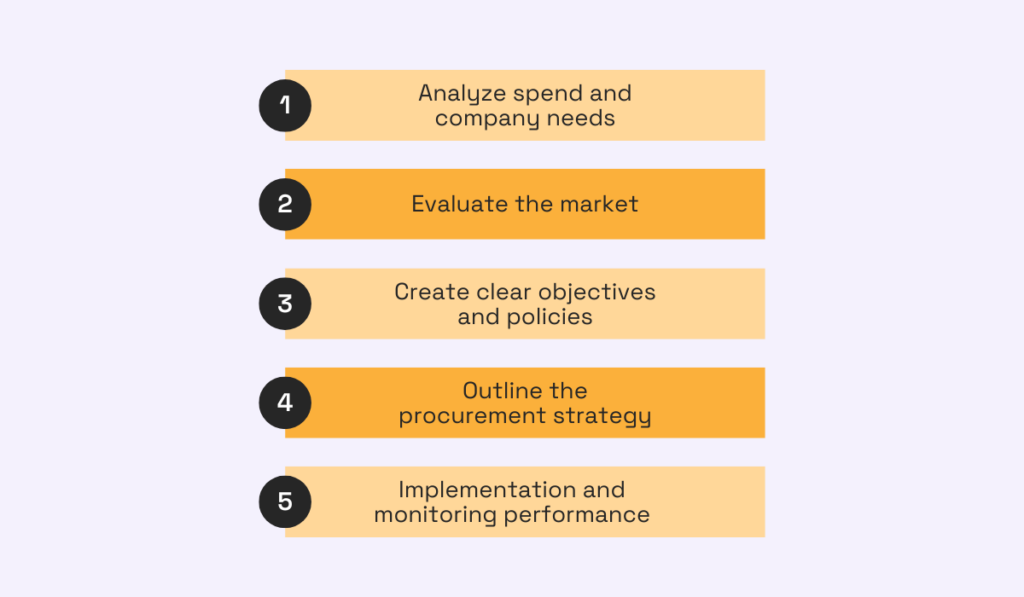
Source: Veridion
While going in-depth into these various sub-activities isn’t our goal here, we’ve highlighted them as it’s important to understand that strategic procurement activities are multifaceted.
Another critical component is procurement category management.
This involves segmenting your organization’s spending into distinct categories (e.g., IT, marketing, raw materials) and developing tailored strategies for each.
By focusing on specific categories, you can identify opportunities for optimization, cost reduction, and risk mitigation in a more targeted manner.
Contract management is yet another area that shouldn’t be overlooked.
In fact, effective contract management can directly translate to cost savings and improved supplier relationships.
Consider the case study from The Telegraph Media Group.

Source: Gatekeeper
The Telegraph was struggling with a lack of centralized visibility into their contracts, leading to auto-renewals without proper oversight and increased financial and regulatory risks.
By implementing Gatekeeper, a robust contract management solution, they gained better visibility into key dates and obligations, received timely reminders for renewals, and improved their understanding of vendor risks.
In a nutshell, strategic procurement involves a series of interconnected activities, each contributing to a more efficient, effective, and value-driven procurement function.
These activities ultimately work together to create a holistic approach that aligns procurement with the overall goals of your organization.
And there you have it, a comprehensive look at the power and potential of strategic procurement.
We’ve unpacked what it means, how it differs from the daily grind of operational procurement, and how technology can turbocharge your strategic initiatives.
We’ve also explored the core activities that can truly transform your procurement function.
Hopefully, you’ve gained a deeper understanding of how strategic procurement isn’t just a “nice to have” but a strategic imperative for businesses looking to thrive in today’s competitive landscape.
So embrace these principles and implement strategic practices to revolutionize your procurement function, drive cost savings, foster stronger supplier relationships, and propel your organization towards greater success.